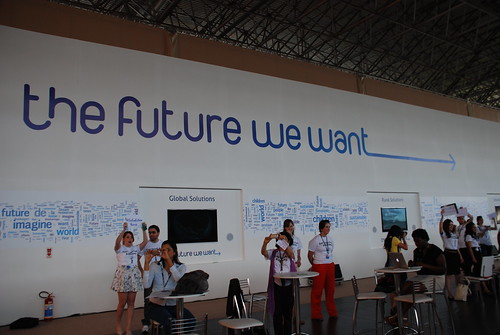Despite some sense of disillusionment amongst global media outlets regarding the difficulty of implementing tangible results from the recent United Nations Conference On Sustainable Development in Brazil (Rio+20), stakeholders still tout reasons to be optimistic. With increasing influence from Brazil, China, and India shaping the conference agenda as well as continued debate over the contested roles and needs of developed, versus developing, countries in combating climate change, extreme poverty, and environmental degradation, the summit’s main focus was finding meaningful space for common ground.

According to Professor Jeffrey Sachs, director of the Earth Institute at Columbia University and special advisor to UN Secretary-General Ban Ki-Moon, the summit’s ultimate goals to achieve sustainable development and a green economy may already be in able hands: our global population of innovative youth. “This has to be the generation of sustainable development – you have no other choice,” Sachs said to students during the conference.
As a result of the Rio+20 final agreement, a working group of representatives from 30 nations has been tasked with developing a set of Sustainable Development Goals (SDGs) by September, which will be blended with the renowned UN Millennium Development Goals (MDGs) by 2015. Although, like most UN agreements, the SDGs are voluntary and not legally binding, they serve along with the MDGs as important symbolic and written records of global responsibility. The SDGs, said Sachs, should be simply stated and easily remembered. “They should decorate the walls of every primary classroom and be part of secondary and university education,” he said to resounding applause. Teachers take note!
Creative Commons Love: Commonwealth Secretariat on Flickr.com


















Comments